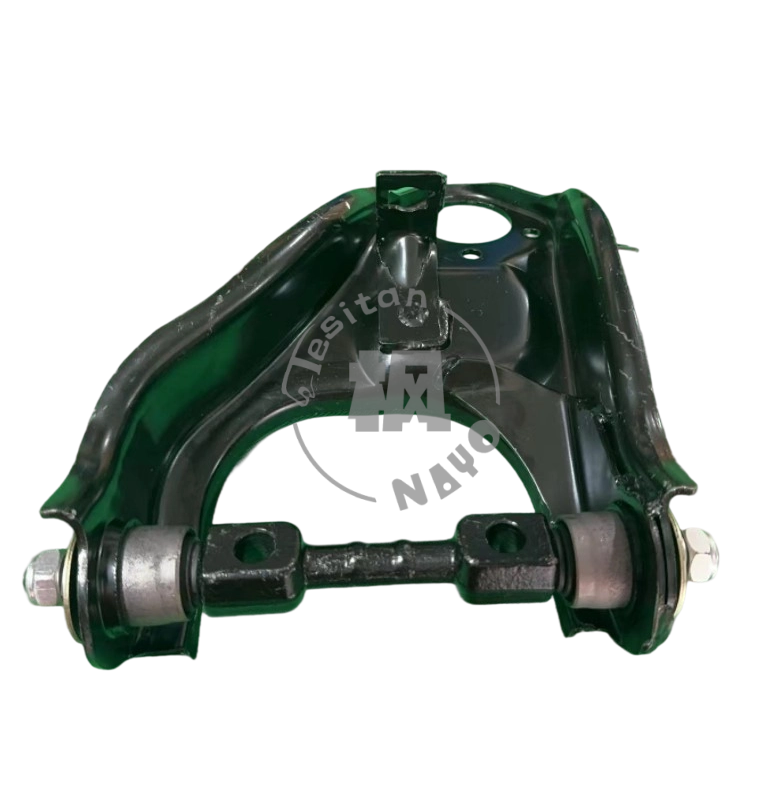

Views: 0 Author: Site Editor Publish Time: 2025-11-07 Origin: Site











The automotive world is a complex ecosystem of interconnected parts, each playing a vital role in the vehicle's overall performance and safety. Among these components, the control arm is a critical element of a car's suspension system. It serves as the connection point between the vehicle's chassis and the wheel hub, ensuring that the wheels remain aligned and stable while driving. This article explores the function of control arms, their importance in the suspension system, and the implications of their failure.
The control arm, also known as an A-arm, is a suspension component that connects the wheel hub to the vehicle's frame. It allows for the up and down movement of the wheel while maintaining the wheel's alignment with the road. Typically, a car will have two control arms per wheel: an upper and a lower arm. These arms are connected to the frame and the wheel hub via ball joints and bushings, which help absorb shocks and reduce noise and vibration.
Control arms are essential for maintaining the proper geometry of the suspension system. They ensure that the wheels remain perpendicular to the road and parallel to each other, which is crucial for safe and efficient driving. Without control arms, the wheels would not be able to move independently, leading to poor handling and increased wear on the tires and other suspension components.
There are several types of control arms used in modern vehicles, each designed to meet specific performance and comfort requirements. The most common types include:
Stamped Steel Control Arms: These are the most common type of control arms and are typically found in mass-produced vehicles. They are made from stamped steel and are known for their durability and cost-effectiveness.
Cast Iron Control Arms: These control arms are made from cast iron and are heavier than their stamped steel counterparts. They are often used in heavy-duty vehicles and offer increased strength and durability.
Aluminum Control Arms: These are lightweight and corrosion-resistant, making them ideal for high-performance vehicles. Aluminum control arms provide improved handling and fuel efficiency but are more expensive than steel or cast iron options.

The suspension system of a vehicle is responsible for providing a smooth and stable ride by absorbing shocks and maintaining tire contact with the road. Control arms play a crucial role in this system by allowing the wheels to move up and down while keeping them aligned with the road. This movement is essential for maintaining traction and ensuring that the vehicle handles properly.
In addition to maintaining wheel alignment, control arms also help distribute the weight of the vehicle evenly across the suspension system. This distribution is crucial for maintaining balance and stability, especially when driving over uneven surfaces or during sharp turns. By keeping the wheels aligned and the vehicle balanced, control arms contribute to the overall safety and performance of the vehicle.
A typical control arm consists of several key components that work together to ensure proper suspension function:
Bushings: These are rubber or polyurethane components that cushion the connection between the control arm and the vehicle's frame. They help absorb shocks and reduce noise and vibration.
Ball Joints: These are spherical bearings that connect the control arm to the wheel hub. They allow for the up and down movement of the wheel while maintaining alignment.
Mounting Brackets: These are metal brackets that attach the control arm to the vehicle's frame. They provide a secure connection and help maintain the proper geometry of the suspension system.
Like any other component in a vehicle, control arms can wear out over time and may need to be replaced. Recognizing the signs of a failing control arm is crucial for maintaining the safety and performance of the vehicle. Some common signs of a failing control arm include:
Clunking Noise: A clunking noise when driving over bumps or during sharp turns may indicate that the control arm bushings or ball joints are worn out.
Uneven Tire Wear: If the control arms are not functioning properly, the wheels may not remain aligned, leading to uneven tire wear.
Vibration in the Steering Wheel: A failing control arm can cause vibrations in the steering wheel, especially at higher speeds.
Poor Handling: If the control arms are not maintaining proper wheel alignment, the vehicle may handle poorly, especially during turns or when driving over uneven surfaces.
The car control arm is an essential component of a vehicle's suspension system, playing a critical role in maintaining wheel alignment and ensuring a smooth and stable ride. Understanding the function of control arms and recognizing the signs of their failure can help drivers maintain the safety and performance of their vehicles. Regular inspections and timely replacements of worn-out control arms can prevent more significant issues and ensure that the vehicle remains safe and reliable on the road.